 Knightqueen by Anna Hackett
Knightqueen by Anna Hackett Format: eARC
Source: author
Formats available: paperback, ebook
Genres: science fiction, science fiction romance, space opera
Series: Oronis Knights #3
Pages: 221
Published by Anna Hackett on May 2, 2024
Purchasing Info: Author's Website, Amazon
Goodreads
A queen and her battle-scarred guard are on the run on an alien planet…with a relentless enemy hunting them.
Knightqueen Carys of Oron lives a life of duty to her people and planet. After the murder of her parents, she worked hard to become a fair and dedicated leader. She never expected to be abducted by the vicious Gek’Dragar and locked in a mountain prison, but having her head knightguard at her side makes it bearable. Older, scarred Sten is duty personified, the one man she’s always been able to trust.
He’s also the only man she’s ever loved, not that she’s ever told him that.
Knightguard Thorsten Carahan has sworn to protect his knightqueen, and lives and breathes her safety. He works hard to keep his mind on his duty, and not on the too young, too beautiful, and too kind queen who is way out of his league. But now they’ve escaped their enemy’s prison and are on the run on a dangerous planet. When they learn that the Gek’Dragar have created a lethal weapon to use against the Oronis, Sten knows he must get Carys home. But with danger at every turn, lines get blurred.
With only each other to depend on, Carys and Sten’s bond of duty and respect tangles with forbidden desire and need. As passion flares, they can no longer deny their connection, and they will discover just how far they are willing to go for their people…and each other.
My Review:
 When last we left our heroes – actually, in this particular case, it’s more like “when first we met our heroes” back in the first book in the Oronis Knights series, Knightmaster. In the first story, the Oronis had just welcomed a delegation from Terra, our very own Earth, in the hopes of forging an alliance to fight the rapacious Gek’Dragar.
When last we left our heroes – actually, in this particular case, it’s more like “when first we met our heroes” back in the first book in the Oronis Knights series, Knightmaster. In the first story, the Oronis had just welcomed a delegation from Terra, our very own Earth, in the hopes of forging an alliance to fight the rapacious Gek’Dragar.
The Terrans had already formed a similar alliance with the Eons, in spite of a somewhat rocky beginning, as part of the stories told in the marvelous Eon Warriors series. The Eons are long-standing allies of the Oronis, and now all three planets face the same enemy, the Gek’Dragar.
“The enemy of my enemy is my friend” as that saying goes. Not that this alliance was EVER smooth sailing, as it began back in Knightmaster with the Gek’Dragar kidnapping the Oronis Knightqueen and her Knightguard, and framing the Terrans for the crime.
But once that misdirection got straightened out, the Oronis and the Terrans have been on a joint mission to rescue the Knightqueen – assuming that she and her Knightguard don’t manage to rescue themselves, first.
Which is where we left those heroes at the end of the second book in the series, Knighthunter. That hunter team blew open and blew up the prison where the queen and her bodyguard, were being held, and Carys and Sten escaped in the chaos.
Meaning that they unknowingly ran away from their rescuers, jumped out of the frying pan into the fire – sometimes literally – and have spent the past several days outrunning their Gek’Dragar pursuers, throwing off the effects of the drugs they were injected with that suppressed their normally formidable powers, and generally running themselves into the ground.
Because the monsters on this hellhole planet are just as deadly as the Gek’Dragar – if not maybe a bit worse – and Carys and Sten have no weapons or armor until their powers return.
All they have is each other. Which has always been more than enough – even if neither of them has ever admitted that to themselves – let alone each other.
It’s not right, it’s not proper, for a Knightqueen to fall in love with her Knightguard. But this time, it’s inevitable.
 Escape Rating B+: Knightqueen is the culmination of the whole, entire Oronis Knights series – which is only three books long. Meaning that, on the one hand, you really do kind of need to start at the beginning with Knightmaster, while on the other hand, three novellas is just a lovely amount of reading for a rainy spring weekend – of which there are PLENTY this time of year!
Escape Rating B+: Knightqueen is the culmination of the whole, entire Oronis Knights series – which is only three books long. Meaning that, on the one hand, you really do kind of need to start at the beginning with Knightmaster, while on the other hand, three novellas is just a lovely amount of reading for a rainy spring weekend – of which there are PLENTY this time of year!
Knightqueen is a bodyguard romance. Maybe not exactly like the movie – certainly the SFnal setting if Knightqueen is literally light years away from the movie – but the trope is the trope is the trope – and it’s ALL here in Knightqueen.
Except the music, so you’ll just have to bring your own. I kept hearing Whitney Houston singing “I Will Always Love You” in the back of my mind as I read – and it took the longest time to figure out why.
Unlike the movie, the ending of Knightqueen results in a resounding HEA. That may seem like a bit of a spoiler, but all of this author’s stories end in either an HEA or an HFN depending on just how FUBAR the world they are set on happens to be.
It is part of why I enjoy her work so much.
But this particular entry in the series hit one of my less than favorite tropes pretty hard. The relationship between Carys and Sten does have its questionable aspects, she’s queen, he’s her bodyguard, he’s over a decade older which isn’t itself enough to make things squicky but he watched her grow up which is at least on the border of questionable.
As it’s usually not so much the years as the mileage, it’s not the age difference per se so much as it is that Carys is inexperienced with romantic relationships – which is not a surprise as she’s been queen from a very young age and it would never have been politically safe for her to go on dates or experiment with either love or sex.
Nevertheless, the trope that this fell into that put me off a bit was that Sten had a really bad case of the “I’m not worthy’s” that was a whole lot more personal and ingrained in his psyche than just the difference in their respective stations. This is a “me” thing and may not be a “you” thing.
Putting it another way – I did love the bodyguard romance but wasn’t thrilled with how little the bodyguard thought of himself in it. Your reading mileage obviously may vary.
That being said, I still had a grand time with the entire Oronis Knights series and am a bit sorry to see it come to end even though I’m happy to see the Gek’Dragar put in their place – a grave.
As this series has come to a close – and doesn’t end with teasers for a spinoff, it looks like the author will be turning back to contemporary action adventure romances for most of this year. Leaving this reader looking forward to the next book in her Unbroken Heroes series, The Hero She Craves, coming next month!

 People in Glass Houses (Ghost Hunters, #16) by
People in Glass Houses (Ghost Hunters, #16) by 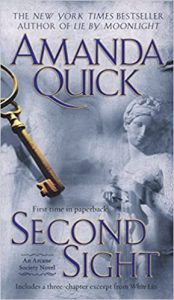 Escape Rating A-: Once upon a time, a historical romance author writing under the name of Amanda Quick introduced an organization of physically adept practitioners and mad scientists into her Victorian Era set romances – and the
Escape Rating A-: Once upon a time, a historical romance author writing under the name of Amanda Quick introduced an organization of physically adept practitioners and mad scientists into her Victorian Era set romances – and the  As is often the case in the entire extended
As is often the case in the entire extended 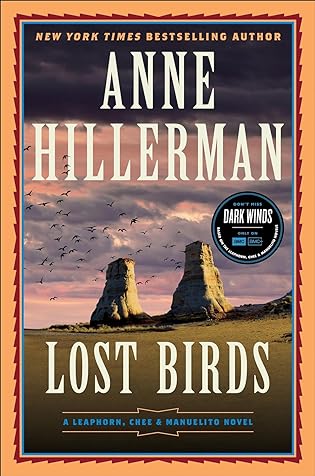 Lost Birds (Leaphorn, Chee & Manuelito #27) by
Lost Birds (Leaphorn, Chee & Manuelito #27) by 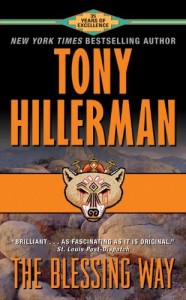 Especially, but absolutely not exclusively, to the ‘Legendary Lieutenant’ himself, retired Navajo Nation Police Lieutenant Joe Leaphorn – the original protagonist of this series back when it began back in 1970 in
Especially, but absolutely not exclusively, to the ‘Legendary Lieutenant’ himself, retired Navajo Nation Police Lieutenant Joe Leaphorn – the original protagonist of this series back when it began back in 1970 in  All of which made Lost Birds another enthralling chapter in this long-running saga. While I don’t think a new reader would need to start back at the very, very beginning, picking this series up with
All of which made Lost Birds another enthralling chapter in this long-running saga. While I don’t think a new reader would need to start back at the very, very beginning, picking this series up with 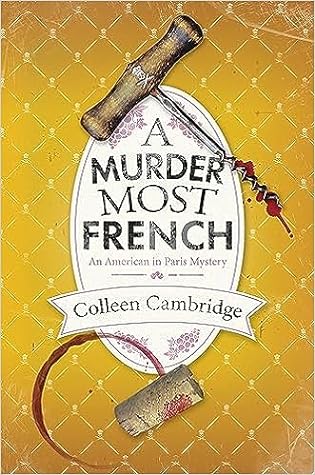 A Murder Most French (American In Paris Mystery, #2) by
A Murder Most French (American In Paris Mystery, #2) by  Julia Child is too busy learning French cooking, living her larger-than-life life in Paris AND at the beginning of writing her masterpiece,
Julia Child is too busy learning French cooking, living her larger-than-life life in Paris AND at the beginning of writing her masterpiece, 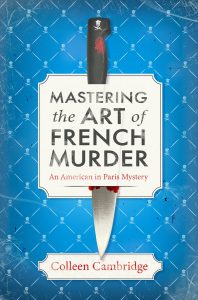 Escape Rating A+: If you loved the first book in this series – and who didn’t? – you will run, not walk to get this second book because it’s every bit as charming as the first. If you still need a bit of convincing, I’m going to get right to that.
Escape Rating A+: If you loved the first book in this series – and who didn’t? – you will run, not walk to get this second book because it’s every bit as charming as the first. If you still need a bit of convincing, I’m going to get right to that.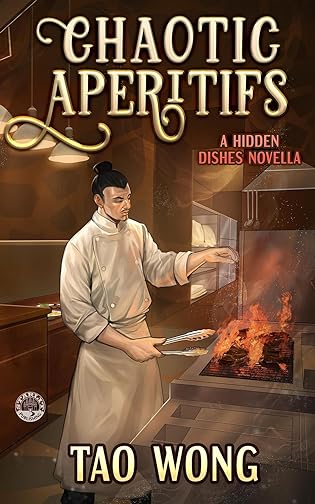 Chaotic Apéritifs: A Cozy Cooking Fantasy (Hidden Dishes Book 2) by
Chaotic Apéritifs: A Cozy Cooking Fantasy (Hidden Dishes Book 2) by  Escape Rating A-: I’m doing this review a week early so that you have a chance to read the tasty first book in the
Escape Rating A-: I’m doing this review a week early so that you have a chance to read the tasty first book in the 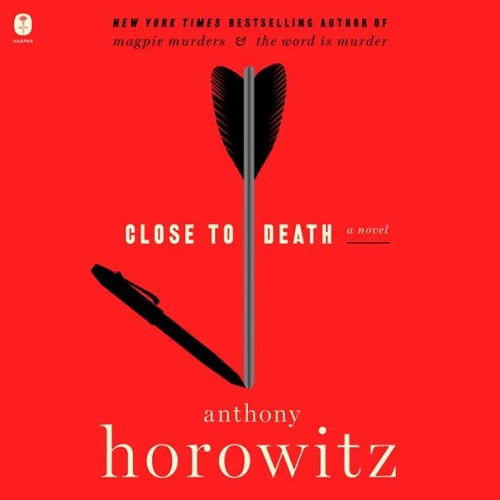 Close to Death (Hawthorne & Horowitz, #5) by
Close to Death (Hawthorne & Horowitz, #5) by 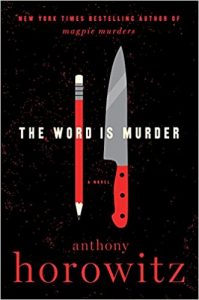
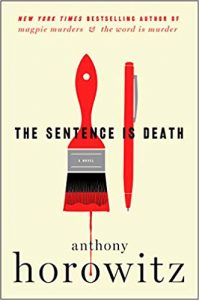

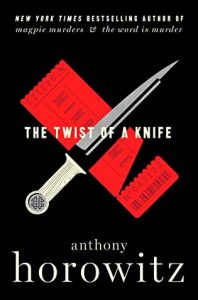
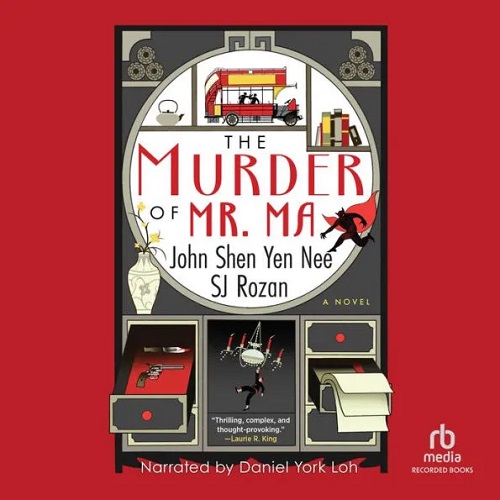 The Murder of Mr. Ma (Dee & Lao, #1) by
The Murder of Mr. Ma (Dee & Lao, #1) by 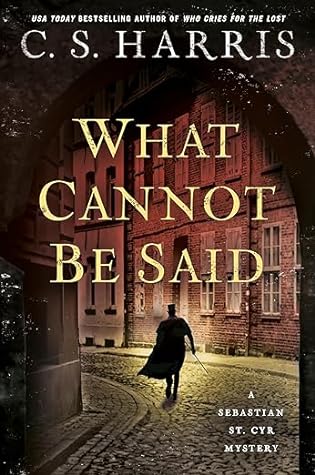 What Cannot Be Said (Sebastian St. Cyr, #19) by
What Cannot Be Said (Sebastian St. Cyr, #19) by 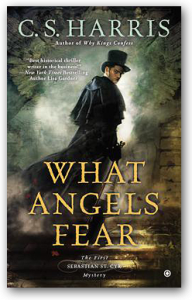 Escape Rating A+: This was, as is usual for my reading in
Escape Rating A+: This was, as is usual for my reading in 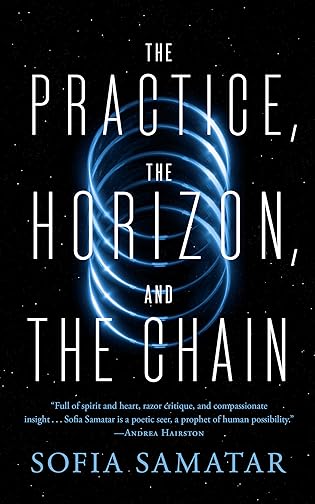 The Practice, the Horizon, and the Chain by
The Practice, the Horizon, and the Chain by  Not that academia doesn’t do plenty of caste stratification of its very own, and not that it can’t be both blood thirsty and bloody minded – particularly in its small-minded, impractical politics. If an exploration of that appeals and you enjoy SF mysteries, Malka Older’s Mossa and Plieti series,
Not that academia doesn’t do plenty of caste stratification of its very own, and not that it can’t be both blood thirsty and bloody minded – particularly in its small-minded, impractical politics. If an exploration of that appeals and you enjoy SF mysteries, Malka Older’s Mossa and Plieti series, 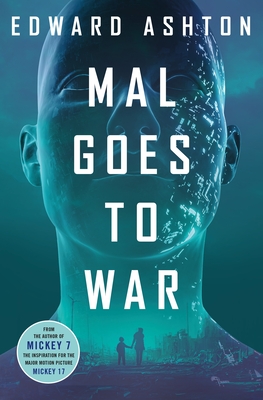 Mal Goes to War by
Mal Goes to War by 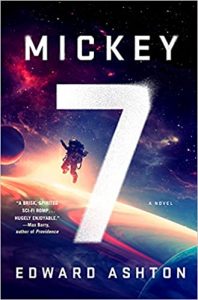 Because Mal isn’t human at all. He’s a free A.I., or as his people prefer to be called, a Silico-American. He’s merely observing this stupid war from the perspective of an otherwise fairly autonomous but not intelligent drone when he gets the wild and crazy idea to see what it would be like to have a body.
Because Mal isn’t human at all. He’s a free A.I., or as his people prefer to be called, a Silico-American. He’s merely observing this stupid war from the perspective of an otherwise fairly autonomous but not intelligent drone when he gets the wild and crazy idea to see what it would be like to have a body.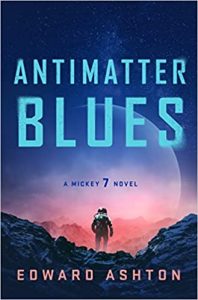 What hooks the reader, or at least this reader, from the very first page is Mal’s conversation with his two fellow A.I.s, Clippy and !HelpDesk. They’re all snarky to the max, and none of them think much of humanity. To them, we’re entertainment – and we’re bad, boring entertainment at that.
What hooks the reader, or at least this reader, from the very first page is Mal’s conversation with his two fellow A.I.s, Clippy and !HelpDesk. They’re all snarky to the max, and none of them think much of humanity. To them, we’re entertainment – and we’re bad, boring entertainment at that.